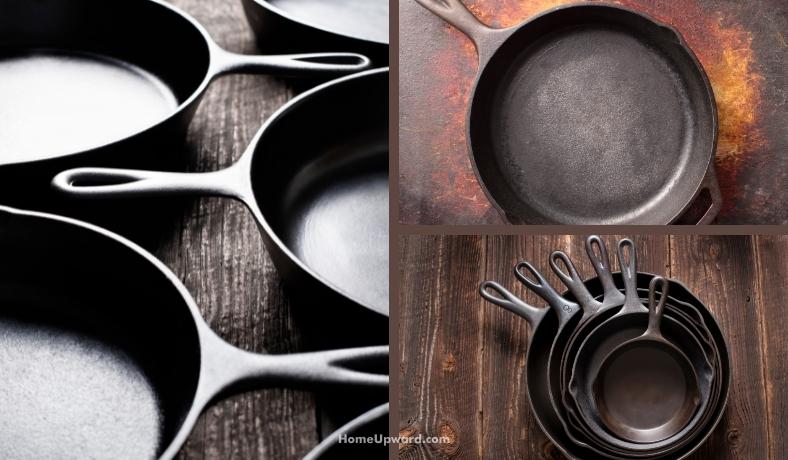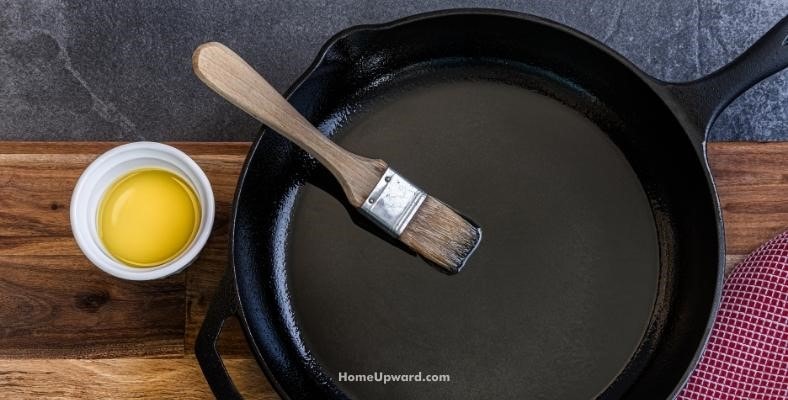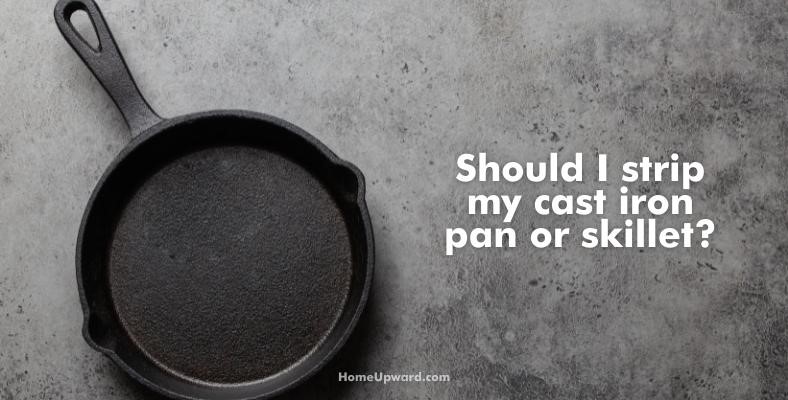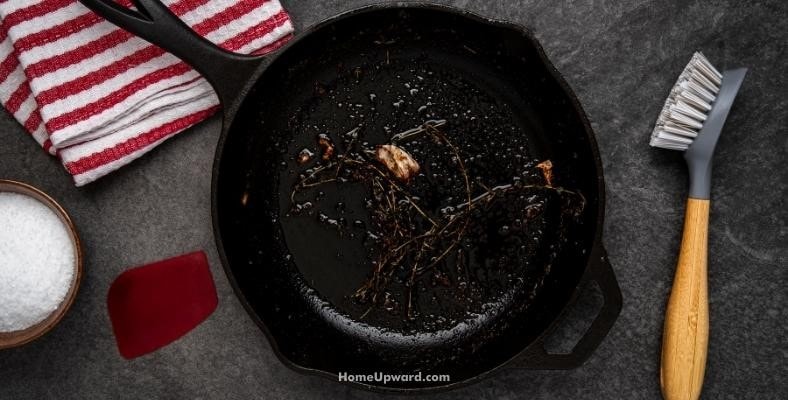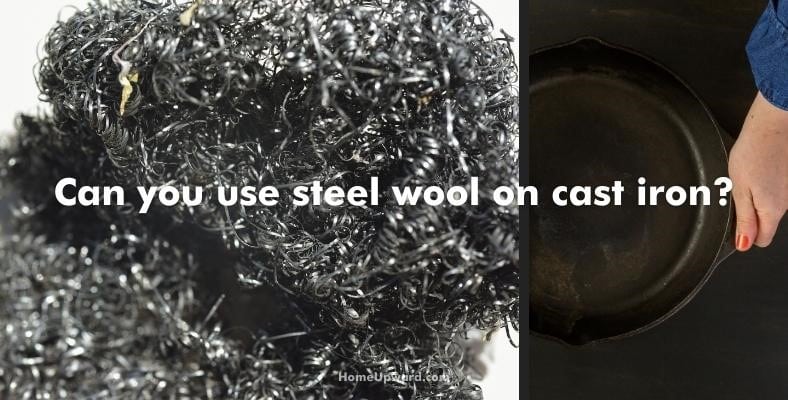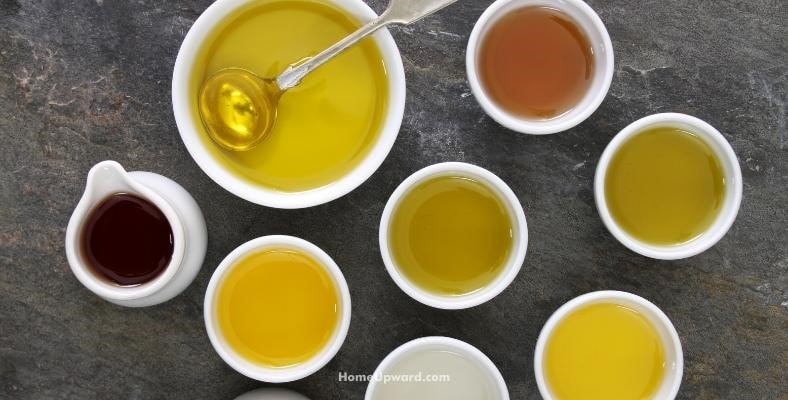Contents
How to Strip a Cast Iron Skillet or Pan
If your cast iron is showing gray patches it may be a good idea to strip your cookware and apply a new layer of seasoning to prevent rust and food from sticking.
What is seasoning on a skillet?
“Seasoning” is what we call cast iron’s famous smooth black surface that comes from layers of fat or oil heated over top of the cast iron surface. The seasoned (treated) finish acts as a protective surface that’s resistant to heat, corrosion, and is stick resistant, too.
That’s important because foods tend to stick pretty easily to a bare metal surface.
The color you see is sometimes called the patina will darken with use during cooking. To season a cast iron skillet or pan you’ll have to first “strip” the old layer before applying a new one.
Self-Cleaning Oven Method
This method uses heat to strip the cast iron. Be sure your oven has a self-cleaning feature.
It’s very helpful if your kitchen is well-ventilated as this can be a long and smelly process:
- Prepare for self-cleaning: remove the oven racks and loose items.
- Place the cast iron pan or skillet with the cooking surface face-down in the oven.
- Close the door and turn the oven onto the self-cleaning setting. This will take a couple of hours.
- Allow the cookware to cool.
- Remove and wash with hot soapy water to clean debris or rust.
- Season immediately.
Firepit or Wood-Burning Stove Method
This method uses heat to strip the seasoning. If you’re using an indoor wood-burning stove, make sure the area is well-ventilated.
- Build a fire in your firepit or wood-burning stove.
- Allow the fire to reduce to coals and hot ash.
- Bury your cast iron cookware with the cooking surface face-down in the ashes. Let it rest overnight.
- Remove and wash with hot soapy water to clean debris or rust.
- Season immediately.
Oven Cleaner Method
This method uses lye-based chemical products. Wear proper protective equipment: heavy-duty rubber gloves, protective goggles, and thick clothing.
- Spray your cast iron with a lye-based oven cleaner like Easy Off.
- Seal the cookware inside a heavy-duty garbage bag. Let it rest for up to 24 hours.
- Remove and scrub with hot water and a nonmetal scrubber.
- Repeat steps 1 through 3 until completely stripped.
- Wash with warm soapy water.
- Season immediately.
Seasoning
To prevent rusting, season your cookware immediately after stripping. Make sure your workspace is well ventilated for this process as well.
- Thoroughly dry your cast iron cookware. Place it in a 200°F oven for ten minutes or over a stovetop flame until all remaining moisture evaporates.
- Spread a thin layer of oil over all surfaces, including the sides, bottom, and handle!
- Buff with a paper towel until the excess oil is absorbed and the surface no longer appears greasy.
- Place the cookware with the cooking surface face-down in a 375°F oven for 30 minutes. Place a baking sheet underneath to catch excess oil.
- Remove and repeat steps 2 through 5 two to four times.. Watch out – it will be hot!
- Allow it to cool when done.
Should I Strip My Cast Iron Pan or Skillet?
Cast iron doesn’t require a lot of maintenance. Frequent use is the best way to maintain your cookware.
Adding oil before cooking and cooking with fatty foods helps reinforce the seasoned cast iron every time you’re making something to eat.
Stripping and seasoning your cookware is a lengthy process so fortunately you won’t need to do it very much at all. Some reasons to strip and season your cast iron are:
- Your cast iron has gone unused for years.
- You’re restoring an antique or second-hand pan or skillet.
- Food tends to cling.
- There are rust spots or flakes.
How Often Should You Season Cast Iron?
You should season your cast iron once every few months. However, frequent usage is the best way to protect the seasoning.
As an added precaution, wash your cast iron with warm water and dish soap after normal use. Don’t leave it to soak.
Instead, dry it thoroughly and spread a thin layer of oil over the cooking surface. Buff the oil with a paper towel and store as usual when cooled down.
Can You Use Steel Wool on Cast Iron?
No, stay away from steel wool at it is abrasive and can strip the seasoning. Wash your cast iron in hot soapy water and remove difficult food debris with a nonmetal scrubber.
Can I Use a Copper Scrubber, Scotch Brite, or Brillo on Cast Iron?
Yes, these are all less abrasive than steel wool and are safe to use on your cast iron cookware.
What Is the Best Oil to Season Cast Iron?
You can use a variety of cooking oils to season your cast iron, actually! You can also try out different oils to find your favorite flavor and each one’s heat resistance.
Here are some of the best oils to season cast iron:
- Grapeseed oil is the most popular choice among professionals. Its neutral aroma and high smoke point make it perfect for pans with a variety of uses, and it is widely available in supermarkets for an affordable price.
- Another great option is flaxseed oil. Flaxseed oil bonds well with cast iron to create a nonstick surface. However, it has a low smoke point and a strong flavor profile.
- Canola and other vegetable oils are also excellent choices for seasoning because of their high smoke point, neutral flavor, availability, and low prices. However, these benefits come at the cost of being more refined than other oils so they taste factor isn’t as good.
What temperature Do I Season My Cast Iron At?
The temperature depends on the smoke point of the oil you choose to season your cast iron, so you’ll need to use a temperature at this same or a bit below that of the oil you’re using.
For example, grapeseed oil has a smoke point of 420°F so the oven temperature shouldn’t go above this or the oil can burn. Flaxseed oil, however, has a smoke point of 225°F. In that case, you’ll have to use lower temperatures and more repetitions of the seasoning process.

